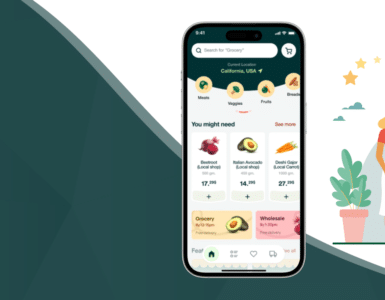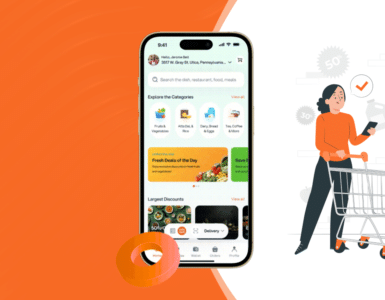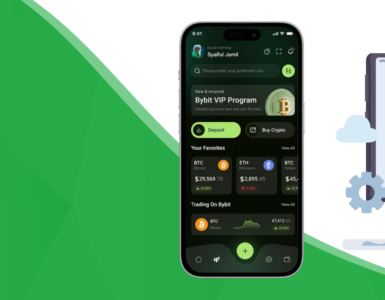You are at the right place to get detailed insights into classified app development and understand why it’s a valuable investment in today’s mobile-first world.
To ordinary users, both eCommerce websites and classified mobile apps might appear to be similar — places where one can buy and sell products online. However, there’s a significant difference between the two, especially in terms of business models and outreach.
How Classified Apps Differ from eCommerce Apps
An ordinary eCommerce mobile app usually focuses on B2C (business-to-consumer) models, where businesses sell directly to customers.
In contrast, classified apps cater to a wider audience and support multiple transaction models:
-
B2B (business-to-business)
-
B2C
-
C2C (consumer-to-consumer)
This flexibility allows anyone to list, buy, or sell products — making the classified app ecosystem far more diverse and expansive than standard eCommerce platforms.
What Do Classified Mobile Apps Offer?
Here are some common features of a modern classified app:
-
Free ad posting with user contact details
-
Quick registration/login process
-
Search bar for finding specific products or sellers
-
Covers a wide product range – from cars and electronics to fashion, furniture, and more
-
In-app chatting/calling between buyers and sellers
-
Real-time notifications about product listings and seller updates
The Booming Market for Classified App Development

The utility of classified mobile apps has created a thriving global market, drawing interest from top app development companies.
If you’re considering building such an app, your first step is to find a trusted app development partner. That’s where your initial investment goes — in hiring the right developers and ensuring your platform is functional, secure, and scalable.
💡 If you’re looking for expert developers, check out Siddhi Infosoft’s eCommerce App Development services – a trusted source for building scalable and feature-rich apps.
Why Are Companies Investing in Classified Apps?
With the growing digital ecosystem, many organizations use online classifieds to promote their services to a massive audience. According to a Statista report, the global classifieds market has been growing at an average annual rate of 9.5% since 2019, with continued momentum expected through 2025.
Let’s look at a couple of real-world examples:
-
Quikr operates in 1200+ Indian cities, covering verticals like jobs, homes, education, and services. It is currently valued at over $565 million.
-
OLX has a global user base of 350+ million. Much of its success comes from the pre-owned automobile segment, making it one of the top platforms in the category. In fact, OLX introduced “Cash My Car”, where users sell their cars to OLX, which then resells them to dealers — a smart move in monetizing second-hand vehicle transactions.
Monetization Strategies in Classified Apps
A well-developed classified app isn’t just a service platform — it’s a revenue-generating machine. Here are some proven monetization models:
1. Advert Selling
App owners can generate revenue by displaying ads within the app. Businesses pay a fee for better ad placement and visibility.
2. Featured Listings
Sellers can pay for premium positioning, gaining visibility in top search results or homepage sections — increasing their chances of making sales.
3. Commission on Transactions
Each transaction made on the platform can earn the app owner a percentage-based commission. This model is favored by sellers since they only pay when they make a sale — value-based monetization.
Must-Have Features of a Successful Classified App
To make your classified mobile app stand out in the crowded market, include these core functionalities:
1. Classified Performance Report
App owners should have access to data dashboards showing:
-
Most popular products
-
High-performing sellers
-
Conversion rates and traffic metrics
This data-driven insight helps in strategy planning and platform improvement.
2. Intuitive UI/UX
A seamless user interface (UI) and user experience (UX) are key to retaining users. Your app should be:
-
Easy to navigate
-
Visually appealing
-
Optimized for both Android and iOS platforms
📌 Tip: Check out Google’s Material Design Guidelines to create a fluid and engaging mobile experience.
3. Guidelines for Ad Publishing
First-time users may feel confused while posting their first ad. Add step-by-step guidance that helps them understand:
-
How to write compelling headlines
-
What details to include in the description
-
Where and how to input contact information
This onboarding assistance can drastically improve user retention and content quality.
4. Review and Rating System
In today’s digital landscape, peer reviews heavily influence buying behavior. Let users rate sellers/products and write detailed reviews. This not only builds trust and credibility but also enhances product discoverability.
Conclusion
In today’s digital-first economy, classified app development is no longer a niche—it’s a strategic necessity. With increasing smartphone penetration and a growing market for second-hand goods, the demand for C2C and B2C trading platforms is at an all-time high.
Whether you’re a startup or an established business, investing in a classified mobile app can help you:
-
Expand your market reach
-
Offer diversified services
-
Generate multiple revenue streams
So, if you’re planning to launch your own app, ensure you’re working with the right app development company, equipped with the technical prowess and market insight to bring your vision to life.
👉 Need help getting started? Explore our eCommerce and mobile app development services and let’s build something remarkable together.

























